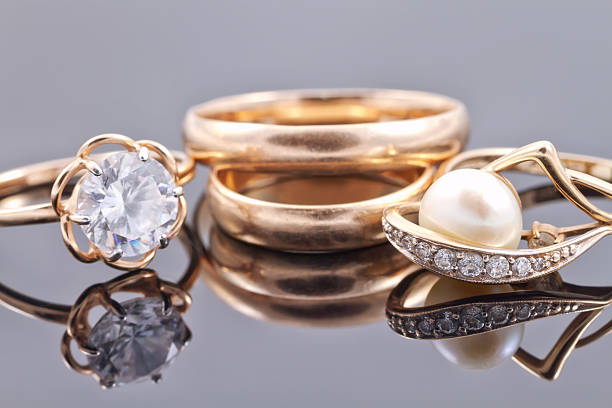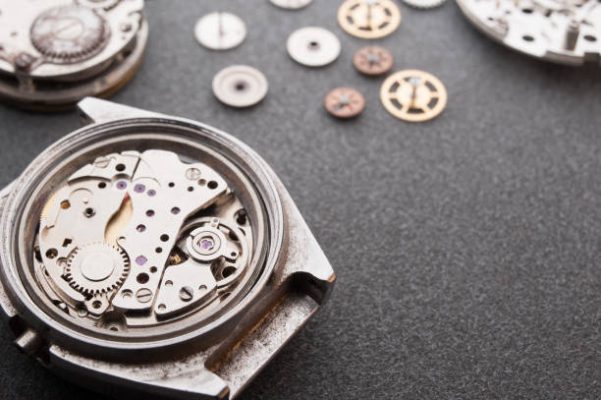Vintage jewelry is celebrated for its unique character, intricate craftsmanship, and historical significance. The appeal of vintage designs lies in their timeless beauty and the stories they tell, connecting us to different eras and styles. These classic jewelry designs have transcended time and trends, remaining cherished by collectors and fashion enthusiasts alike. In this article, we explore some of the most enduring vintage jewelry styles that have continued to captivate and inspire through the ages.
1. Art Deco: A Bold Statement of Elegance
- Overview: The Art Deco era, spanning from the 1920s to the 1930s, is renowned for its geometric patterns, bold colors, and luxurious materials. Art Deco jewelry features clean lines, symmetrical designs, and the use of materials like platinum, diamonds, and colored gemstones.
- Why It’s Timeless: Art Deco designs embody the glamour and sophistication of the Roaring Twenties. Their combination of sleek geometric shapes and vibrant hues creates a striking visual impact that continues to appeal to those seeking classic yet distinctive jewelry.
- Cultural Influence: The Art Deco movement was influenced by various cultures, including Ancient Egyptian and Oriental styles. Iconic figures like Coco Chanel and Hollywood stars of the era helped popularize Art Deco jewelry, making it synonymous with high fashion and opulence.
2. Victorian: Romantic and Ornate Designs
- Overview: Victorian jewelry, named after Queen Victoria of England, spans from the 1830s to the early 1900s. This period is characterized by its intricate craftsmanship, sentimental motifs, and use of materials like gold, gemstones, and enamel.
- Why It’s Timeless: Victorian jewelry is known for its romantic and elaborate designs, including detailed engravings, floral motifs, and meaningful symbols. These pieces often incorporate sentimental elements, making them cherished heirlooms that carry personal significance.
- Cultural Influence: Victorian jewelry reflects the social and cultural changes of the era, including the rise of romanticism and the emphasis on sentimental value. Queen Victoria’s own engagement ring and mourning jewelry influenced many of the era’s styles, making Victorian jewelry a lasting symbol of love and remembrance.
3. Edwardian: Graceful Elegance and Intricate Detail
- Overview: Edwardian jewelry, from the early 1900s to the 1910s, is known for its delicate, lace-like designs and use of platinum. This era features intricate filigree work, milgrain detailing, and the extensive use of diamonds and pearls.
- Why It’s Timeless: Edwardian jewelry is celebrated for its refined and feminine aesthetics. The use of platinum allows for the creation of intricate, lightweight designs that highlight the beauty of the gemstones, creating pieces that are both elegant and enduring.
- Cultural Influence: The Edwardian era, named after King Edward VII of England, was marked by a preference for sophistication and refinement. This period’s jewelry designs are often associated with high society and luxury, influencing modern jewelry with their timeless grace.
4. Retro: Bold and Playful Designs of the 1940s and 1950s
- Overview: Retro jewelry, popular in the 1940s and 1950s, is characterized by its bold, playful designs and the use of materials like gold, gemstones, and innovative synthetic materials. Retro designs often feature oversized gemstones, geometric patterns, and playful motifs.
- Why It’s Timeless: Retro jewelry reflects the optimism and creativity of post-war fashion. Its distinctive style, marked by bold colors and unconventional designs, offers a nostalgic charm that continues to appeal to those who appreciate unique and eye-catching pieces.
- Cultural Influence: The Retro era was influenced by Hollywood glamour and the burgeoning popularity of costume jewelry. Stars like Marilyn Monroe and designers like Cartier helped popularize Retro designs, making them symbols of mid-20th-century style and exuberance.
5. Georgian: A Touch of Romance and Craftsmanship
- Overview: Georgian jewelry, from the early 18th century to the early 19th century, features ornate designs with a focus on craftsmanship and intricate detailing. This era is known for its use of gold, gemstones, and the incorporation of natural motifs and sentimental symbols.
- Why It’s Timeless: Georgian jewelry is renowned for its exquisite craftsmanship and romantic aesthetic. The use of hand-cut gemstones and intricate settings creates pieces that are both beautiful and historically significant.
- Cultural Influence: The Georgian period reflects the elegance and refinement of the 18th and early 19th centuries. The jewelry of this era often features motifs inspired by nature and classical themes, influencing modern designs with its historical charm.
6. Belle Époque: The Height of Opulence and Artistry
- Overview: The Belle Époque era, from the late 19th century to the early 20th century, is characterized by its opulent designs and artistic flair. Belle Époque jewelry often features intricate metalwork, large gemstones, and the use of platinum and diamonds.
- Why It’s Timeless: Belle Époque jewelry is celebrated for its luxurious and artistic designs, which reflect the opulence and sophistication of the period. The intricate detailing and use of high-quality materials create pieces that remain highly coveted by collectors.
- Cultural Influence: The Belle Époque period, also known as the “Beautiful Era,” was marked by cultural and artistic flourishing in Europe. The jewelry of this era reflects the elegance and creativity of the time, influencing contemporary designs with its timeless beauty.
7. Bohemian: Free-Spirited and Artistic Flair
- Overview: Bohemian jewelry, popular in the late 19th and early 20th centuries, is characterized by its free-spirited, artistic designs. This style often features natural materials, unconventional shapes, and a mix of vibrant gemstones.
- Why It’s Timeless: Bohemian jewelry reflects a sense of individuality and artistic expression. Its eclectic designs and use of natural materials create pieces that are both unique and enduring, appealing to those who value creativity and personal style.
- Cultural Influence: The Bohemian style was influenced by the artistic and cultural movements of the time, including the Arts and Crafts movement and the influence of Eastern designs. It continues to inspire modern jewelry with its vibrant and unconventional aesthetic.
Conclusion
Vintage jewelry designs offer a glimpse into the past while continuing to captivate with their timeless beauty and craftsmanship. From the bold elegance of Art Deco to the romantic intricacies of Victorian designs, these classic styles remain cherished for their historical significance and enduring appeal. Whether worn as heirlooms or sought after for their unique charm, these vintage designs connect us to different eras and celebrate the art of jewelry making through the ages.



